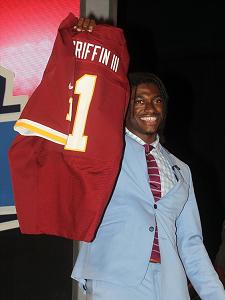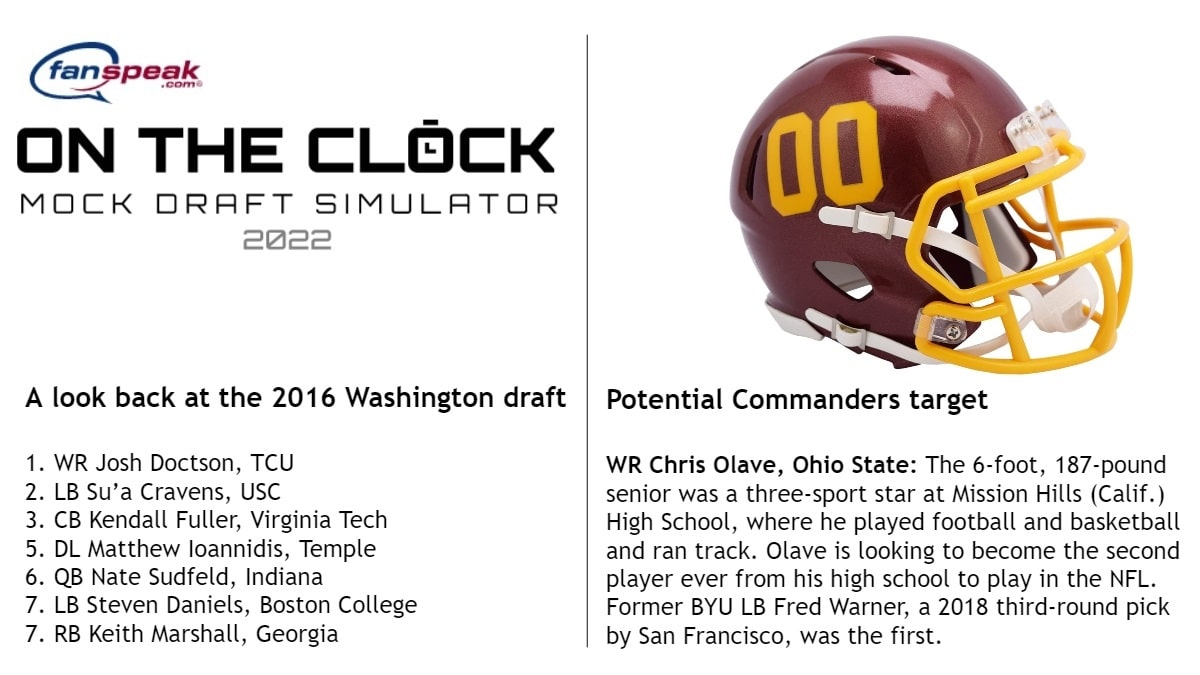Question and Answer with an Orthopedic Surgeon About RGIII’s Progression

Last week I had the opportunity to interview Orthopedic Surgeon Dr. David Geier about ACL surgeries and recovery times for athletes, with a primary focus on Robert Griffin III‘s situation. Though Dr. Geier was not personally involved with RGIII’s surgery or recovery process, he is the head of a major sports medicine practice in South Carolina, and performs well over 100 ACL surgeries a year.
Dr Geier has also assisted in the orthopedic care for both the St. Louis Rams and the St. Louis Cardinals. In addition he has been used as a medical expert for just about every major media outlet there is. The following quotes are from my conversation with him, and my thoughts are below his quotes.
Part I | Part II | Part III
Q: On what it means when a reconstructed ACL is “healed”, and how players can claim to be 100% back, but are perhaps not at full strength. Also how does it compare to a fully healthy ACL:
A: That’s a great question. There is really two different parts to that question. When I say that it takes about six months for a graft to incorporate, that is really based on bio-mechanical properties of the graft itself. It is basically bio-mechanically as strong as has the other knee’s ACL. Not the other knee and the muscles around it, but just the ligament itself. So, it’s getting close to 100%, and that’s just average – sometimes a little shorter than that, but more often, a little longer than six months.
But that’s just looking specifically at the strength of the ligament. And that is the concern about when people ask about using cadaver grafts – that process will take a lot longer. In most athletes, we use their own tissue and that takes about six months. But what you are asking about is when they return to 100%, what we more consider functional strength. Getting all their quad and hamstring strength back and getting the same explosiveness and plyometric strength back, and the ability to cut on it and pivot on it and jump and leap. And that’s a very different thing, and that’s what I think we have really seen over recent years.
Yes, you may be cleared to play, meaning that you have reached a baseline ability as far as strength goes and a baseline ability to just do your job at six or seven months. But most players will tell you that it’s about nine to twelve months before it really feels normal. A lot of times you will hear players tell you that it’s their second season back where they really feel like their knee and their ability to do what they want to do is the way it was before they got hurt.
So it’s not just the graft strength – it’s so many other factors: strength, knee range of motion, and some of the functional ability that is really hard to get in a physical therapy setting, other than just getting out there and using it.
My Take: This I really think clears up a lot of confusion I’ve seen with fans who assume that just because a player is cleared to play it means they are now 100% or without risk of re-injury. That just simply isn’t true and it means that they have just reached the baseline level for returning.
The Redskins have seen this before as guys like Kory Lichtensteiger and Tim Hightower were medically cleared to player, but quickly suffered setbacks last year in camp. Already with Brandon Meriweather and Chris Thompson limited the last couple of days it is clear that they aren’t truly 100% or risk free.
The Redskins really need to temper their expectations for all these guys as they battle back from serious injuries. Hopefully Griffin will be okay, but it shouldn’t be assumed that he’ll be 100%, especially right off the bat.
 Q: On increased injury risk to the knee due to the ACL Injury, specifically looking at Robert Griffin III:
Q: On increased injury risk to the knee due to the ACL Injury, specifically looking at Robert Griffin III:
A: A couple of things – and let me just answer that in general about ACL’s, and then we can talk about how Robert Griffin III has a number of different factors that are a little different than most ACL’s.
In general, the risk about coming back too early from an ACL surgery for any athlete or for anybody who undergoes that surgery, is that in addition to re-tearing the ligament, which is not really common – 5% in the first year, and about 10% or 11% in the first five years, but the risk you run if the knee isn’t 100% and it hasn’t regained mobility, is that you can do damage to other structures in the knee as well.
You can tear the meniscus, you could damage the articular cartilage in the bone. It’s certainly a positive to risk for injury if that ligament isn’t as strong as it’s going to be or if all the bulk that provides dynamic stability to the knee hasn’t returned to full strength. The other interesting thing is that we know that you’re actually equally likely, if not maybe a little more likely, to tear your other knee’s ACL in that first year. That seems to be a more common if you haven’t gotten the strength and ability back in the surgical knee. So that’s the other risk potentially of rushing somebody back too fast.
Moving on to some of the factors particular to Robert Griffin III, and again, I’m not involved in his care so his doctors are the only ones who can say for sure. But the confounding issues with him are: one, that it was a revision surgery – this was his second ACL. We know the success rates are lower in revision ACL surgeries across the board.
And then, there’s the fact that he also had a lateral/collateral ligament repair, from all reports that say they sewed his LCL back or reattached it, however they repaired it. That process as well complicates it in terms of return to play, and yet I would argue, potentially makes it riskier. If he gets hurt again, that could be much, much more damaging than somebody who is just a first-time ACL.
My Take: This I found to be very interesting. While the risk of re-injury is only 5% this year and 10-11% in the first five years, and that is just in terms of re-injuring the ACL. The rest of the knee is more susceptible to injury, and it is very possible this is what happened with Griffin last year. His knee was already damaged from the original hit in the Ravens game, which at the time apparently didn’t include the ACL. The knee though wasn’t 100% and it was at higher risk to have another ligament get sprained or tear.
Now perhaps it would have happened regardless in that Seattle game, but it is more likely that it was impacted by the original injury (and further exacerbated throughout that game). The real surprising thing here for me was the fact that you may even be more likely to injure the opposite knee. It definitely makes sense, but it doesn’t seem to be something that is widely reported or thought about.
The Redskins likely saw this happen last year as well with Brandon Meriweather. He was coming back from a sprained MCL in one knee and then saw his ACL tear in the opposite knee. Though it probably isn’t known for sure, it is likely it had something to do with his “good” knee overcompensating for the injured knee. This is something that is going to be really interesting to watch with Griffin and the other players in the ACL rehab club.
Q: On if the LCL involvement increases the re-injury risk for RGIII
A: No, I don’t know that it actually makes the risk for re-injury higher per se. I think it complicates the rehab and you have to go slower in different phases of rehab so it typically just takes longer. It’s not a guarantee – sometimes it doesn’t have any effect.
But those are typically worse injuries so it takes longer to recover. The risk of a higher recurrence rate would be more because it’s a revision ACL than a primary ACL. We know that the recurrence rate is a little bit higher in revisions. But also just the overall success in return to sports, patient satisfaction scores are noticeably lower with revision ACL’s.
My Take: The LCL doesn’t increase the risk which is a positive, but it definitely does affect how Griffin can return from this injury. Again the revision seems to be the biggest factor here with Griffin and the thing that most bears watching going forward.
Part I | Part II | Part III



